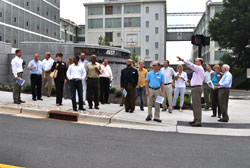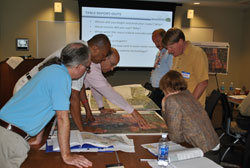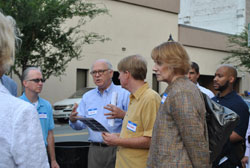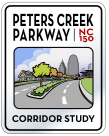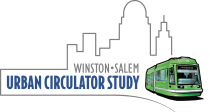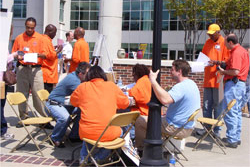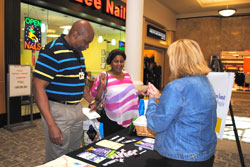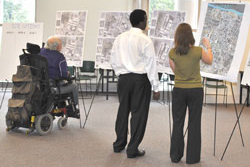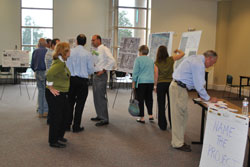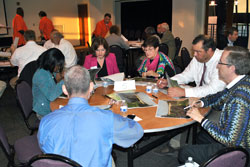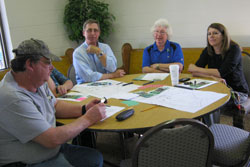Strategy
Understand the Audience
An important step in developing a successful public involvement and outreach program is to appreciate the people that live in the affected neighborhoods, with whom they identify, how they communicate and respond, what they value, why they live there and where they see themselves in the larger community.
Understanding the anatomy of the affected communities and assessing residents’ needs is critical to ensure public participation from a project’s beginning to end. SRI compiles community characteristic data including income levels, literacy rates, age, minority population, and other demographics. We identify these areas on maps using GIS capabilities, development and growth data and recent Census data. We also get to know the area through contact with local agencies, community leaders and resource agencies, as well as by visiting and patronizing the area.
Develop an Identity
Working with OLA Marketing, our firm helps to develop logo concepts for our clients. A project logo should be a carefully, well thought-out design that represents the project and community, and is used on all print materials, exhibit boards, maps, web site, etc. In addition to OLA, we seek involvement from the local school or arts community to help with creative design. Then, we develop logo “guidelines” to help guide the development so that it represents the project and client in a professional manner.
Reach Out to Underserved Populations
We have found that a lot of progress can be accomplished if the audience is actively engaged in the planning process. Working Group/Committee Sessions are commonplace in projects where there is a plethora of issues, concepts or ideas that need to be worked through the process. The purpose of providing working group sessions is to:
- Obtain citizens’ input on issues concerning their neighborhoods and communities in an organized and manageable manner, and one that encourages regular participation in the project. Working groups cover such topics as community impacts, alternatives, location of transit centers, elements of transit centers, bike/pedestrian/open space, economic development, etc. Group members discuss issues and approaches to project concerns, and sessions are open to anyone.
- Provide the client with specific “community-based” ideas and suggestions that may be incorporated into the development process of the project and to assist the client in its context sensitive solutions for the project.
- Promote citizen ownership and investment in the project and the process through construction.
- Maximize public acceptance of the project through information dissemination, communication, and involvement.
Share Information to Stakeholders
One of our most effective tools for educating the public is our speaking presentation to the project’s stakeholders. Our staff goes into the community to provide informative presentations about the project. We prepare materials that “speak” to the audience, including handouts, power point (PPT) presentations and exhibits. Speakers are carefully trained so that they can provide accurate information and respond to questions about the project. They personalize each presentation so that it is ‘stakeholder specific’ and sensitive to stakeholder concerns; thereby enhancing the quality and effectiveness of the presentation. Link to Business 40 Improvement Project
Provide Opportunites for Interaction
An extremely important part of the public involvement process is to identify ways to actively encourage participation in underserved, low income and minority communities (Title VI/Environmental Justice). We coordinate with neighborhood leaders to “spread the word”, translating documents, newsletters or other publications into the appropriate language, and delivering information that is sensitive to the community’s preferences. We schedule meetings that are accessible via bus routes to a majority of community members and arrange our activities in cooperation with resource agencies, libraries, police departments and community liaisons. We also coordinate with tribal representatives in a manner that is consistent with the State and/or Federal communication processes.
Rely on Social Media
With the public’s extensive use of social networking, we augment traditional media services by placing announcements on Face Book and Twitter, writing blogs on web sites and sharing information via the internet. While social networking is a valuable tool to reach a large number of people, SRI continues to emphasize the importance of face-to-face interaction to build the rapport necessary for project success.

